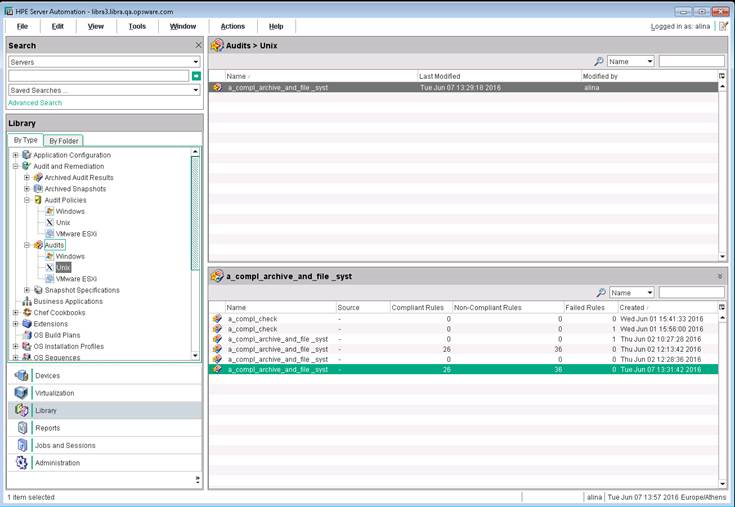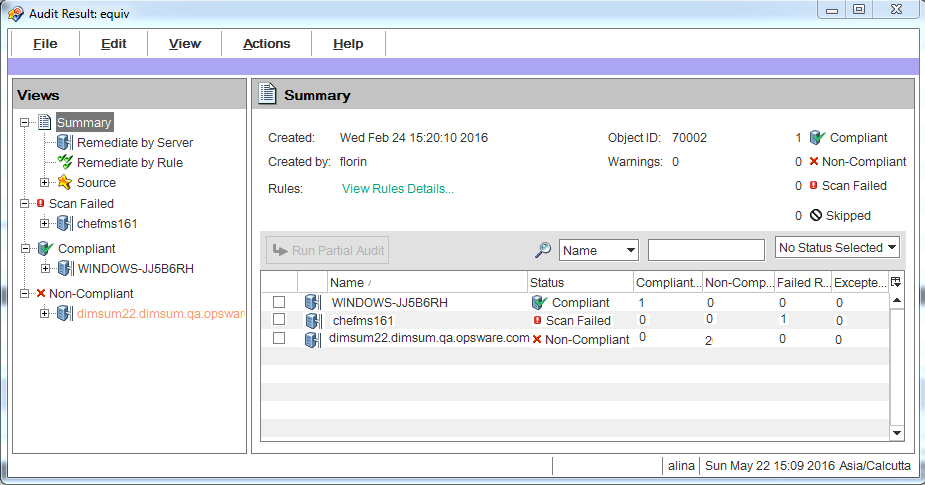Searching the Help
To search for information in the Help, type a word or phrase in the Search box. When you enter a group of words, OR is inferred. You can use Boolean operators to refine your search.
Results returned are case insensitive. However, results ranking takes case into account and assigns higher scores to case matches. Therefore, a search for "cats" followed by a search for "Cats" would return the same number of Help topics, but the order in which the topics are listed would be different.
| Search for | Example | Results |
|---|---|---|
| A single word | cat
|
Topics that contain the word "cat". You will also find its grammatical variations, such as "cats". |
|
A phrase. You can specify that the search results contain a specific phrase. |
"cat food" (quotation marks) |
Topics that contain the literal phrase "cat food" and all its grammatical variations. Without the quotation marks, the query is equivalent to specifying an OR operator, which finds topics with one of the individual words instead of the phrase. |
| Search for | Operator | Example |
|---|---|---|
|
Two or more words in the same topic |
|
|
| Either word in a topic |
|
|
| Topics that do not contain a specific word or phrase |
|
|
| Topics that contain one string and do not contain another | ^ (caret) |
cat ^ mouse
|
| A combination of search types | ( ) parentheses |
|
- Audit results
- Viewing audit results
- Remediation methods
- Viewing value-based audit results
- Remediating comparison-based audit results
- Remediating rules with inherited values
- Viewing and remediating audit results differences
- Cancelling an active remediate audit results job
- Viewing audit results with exceptions
- Searching for an audit
- Deleting an audit
- Deleting audit results
- Archiving audit results
- Exporting audit results
Viewing audit results
In the SA Client, you can view a list of audit results for any audit, as shown in the following figure. When you select an audit in the Library, all results associated with that audit are listed in the bottom details pane.
Audit results

Audit Result Window
The Audit Result window provides detailed information about your audit job, such as the differences between servers targeted by the audit and the rules defined in the audit, as shown in the following figure. This information helps you see whether the servers that have been audited are in compliance with the standards set for your data center.

Views
The Views pane shows an overview of the audit results, including remediation options and servers (targets) grouped by their compliance status.
- Summary: Remediation options that allow you to remediate by server, by rule, or remediate all rules on all servers. Remediation is only available in instances where the target server configurations do not match the rule definitions in the audit. This Summary view also shows the source server used in the audit that the results are based on. The source of an audit can be a server, a snapshot, or no source at all. However, some rules require a source. See Audit elements.
- Compliant:
 Servers that match all rules in the audit.
Servers that match all rules in the audit. - Non-Compliant:
 Servers that did not match all rules in the audit.
Servers that did not match all rules in the audit. - ScanFailed:
 Servers that the audit was unable to determine the target server configuration for, such as servers that cannot communicate with the SA core.
Servers that the audit was unable to determine the target server configuration for, such as servers that cannot communicate with the SA core. - Skipped:
 Servers that were skipped.
Servers that were skipped.
Summary
The Summary pane shows the following information about your audit job:
- Created, Created By: When the audit was created and the name of the user who created it.
- Source: The source server used in the audit that the results are based on. The source of an audit can be a server, a snapshot, or no source at all. However, some rules require a source. See Audit elements.
- Rules: View Rules Details... This link opens the Rules window so that you can view the audit’s rule.
- Warnings: The number of warnings discovered during the audit.
- Object ID: An internal identification number that is used by the SA Client.
- Compliant:
 The number of servers that matched all rules in the audit.
The number of servers that matched all rules in the audit. - Non-Compliant:
 The number of servers that did not match all rules in the audit.
The number of servers that did not match all rules in the audit. - ScanFailed:
 The number of servers that the audit was unable to determine the target server configuration for, such as servers that cannot communicate with the SA core.
The number of servers that the audit was unable to determine the target server configuration for, such as servers that cannot communicate with the SA core. - Skipped:
 Servers that were skipped.
Servers that were skipped. - Run Partial Audit: This link allows you to select servers and re-run the audit on only those rules that have a Non-Compliant or Scan Failed compliance status.
Details
The details pane lists all servers that the audit was run against, the compliance status of each server and counts of how many rules in the audit are compliant, non-compliant, and scan failed. Counts for excepted rules and failed rules are also shown.
Use the column selector tool  to change your display preferences. To rearrange the order of columns, click the column heading and then drag it left or right to change your display preferences.
to change your display preferences. To rearrange the order of columns, click the column heading and then drag it left or right to change your display preferences.
- Compliant:
 The number of rules for which target server configurations matched the rules in the audit.
The number of rules for which target server configurations matched the rules in the audit. - Non-Compliant:
 The number of target server configurations that did not match the rules in the audit.
The number of target server configurations that did not match the rules in the audit. - ScanFailed:
 The number of rules for which the audit was unable to determine the target server configuration for, such as servers that cannot communicate with the SA core.
The number of rules for which the audit was unable to determine the target server configuration for, such as servers that cannot communicate with the SA core. - Skipped:
 Servers that were skipped.
Servers that were skipped.
We welcome your comments!
To open the configured email client on this computer, open an email window.
Otherwise, copy the information below to a web mail client, and send this email to hpe_sa_docs@hpe.com.
Help Topic ID:
Product:
Topic Title:
Feedback:





